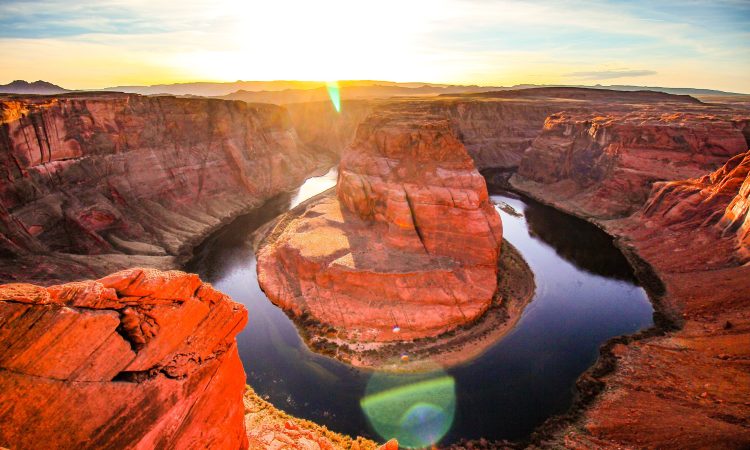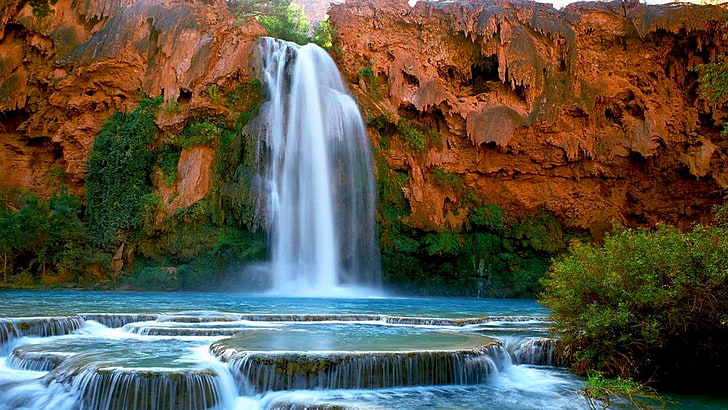
Imagine standing on the edge of an ancient abyss, where every layer of rock, every curve of the canyon walls, whispers tales of time stretching back millions of years. The vastness before you, the Colorado River winding like a ribbon at the canyon’s base, and the kaleidoscope of colors changing with the angle of the sun create an overwhelming sense of awe. Welcome to the Grand Canyon—a natural wonder so magnificent that words can barely capture its grandeur. Visiting this iconic destination isn’t just a trip; it’s an encounter with the sublime beauty of creation, a humbling reminder of nature’s power and God’s artistry.

For those who have yet to experience this marvel, the Grand Canyon is located in Arizona, USA, stretching a staggering 277 miles long, up to 18 miles wide, and over a mile deep. As you stand at the South Rim or trek along its well-worn trails, it feels as though time itself has etched the canyon’s walls with colors that shift from rusty reds to glowing golds to serene purples. The sheer scale of the landscape is enough to make you pause in gratitude, realizing that this place is one of Earth’s most miraculous gifts to humanity, offering an unfiltered glimpse of the raw beauty and majesty of our planet.

Five Fascinating Scientific Facts About the Grand Canyon
- A Geological Time Capsule
The Grand Canyon is essentially a geological timeline, displaying nearly 2 billion years of Earth’s history in its walls. As you explore its depths, you’re walking through eons of time. The uppermost layers are about 200 million years old, while the lower layers, formed from ancient rock, date back nearly 2 billion years. Geologists and tourists alike are drawn to this natural history lesson, where the stratified rock layers reveal Earth’s dynamic processes of uplift, erosion, and sedimentation. - Carved by a River over Millions of Years
The Colorado River, which flows through the base of the canyon, is responsible for carving out this immense gorge over the course of 5 to 6 million years. As the river cut deeper into the rock, the landscape was shaped and reshaped by erosion, creating the stunning canyon walls and breathtaking vistas. This slow but powerful process speaks to the patience and persistence of nature, and visitors marvel at how water—a symbol of life—created such dramatic beauty. - A Unique Climate System
What many visitors find surprising is the range of climate zones within the Grand Canyon. The temperature and environment vary greatly between the rim and the canyon floor. The South Rim, which sits at about 7,000 feet above sea level, is cool and often snow-covered in winter, while the canyon floor, over a mile down, can reach scorching temperatures of over 100°F (38°C) in summer. This diverse climate system creates different ecosystems, making the Grand Canyon home to a wide array of plants and animals, from mountain lions to the rare California condor. - Home to Hidden Caves and Mysterious Waterfalls
While the canyon’s surface is awe-inspiring, what lies beneath is equally fascinating. The Grand Canyon is dotted with more than 1,000 hidden caves, many of which have yet to be explored. Some of these caves contain ancient artifacts, giving archaeologists insight into the lives of Native American tribes who called this land home. Additionally, tucked away within the canyon are breathtaking waterfalls like Havasu Falls, where turquoise waters cascade down red rocks, creating an oasis in the desert. - One of the Most Studied Landscapes on Earth
The Grand Canyon isn’t just a destination for tourists; it’s also one of the most studied geological formations on the planet. Researchers continue to learn from its layers, using them to understand climate change, tectonic activity, and the forces that have shaped our world. The canyon’s unique geological features provide scientists with clues about Earth’s past, including the formation of continents and oceans.
The Spiritual Majesty of the Grand Canyon
For many visitors, the Grand Canyon is more than just a geological wonder—it’s a spiritual experience. Standing at its edge, surrounded by silence, it’s hard not to feel connected to something greater than ourselves. The canyon’s vastness humbles even the most seasoned traveler, reminding us of the Creator’s hand in shaping the world. Every sunrise and sunset over the canyon feels like a painting come to life, as the light dances across the rocks, turning the canyon into a living masterpiece. It’s a moment where nature and spirituality meet, where the soul feels the weight of the Earth’s beauty and the heart whispers, “This is God’s work.”

Visiting the Grand Canyon is a pilgrimage of sorts, one that invites us to marvel at the Earth’s ancient history while reflecting on the divine forces that shaped it. It’s a place where time seems to slow down, and the busyness of life fades away, leaving space for awe, wonder, and deep gratitude.
Whether you’re an adventurer hiking its trails, a family enjoying the view from its many lookout points, or a traveler on a spiritual journey, the Grand Canyon leaves an indelible mark on all who visit. It’s a reminder of the world’s breathtaking beauty, of the mysteries still to be explored, and of the divine gifts woven into the fabric of our planet.




